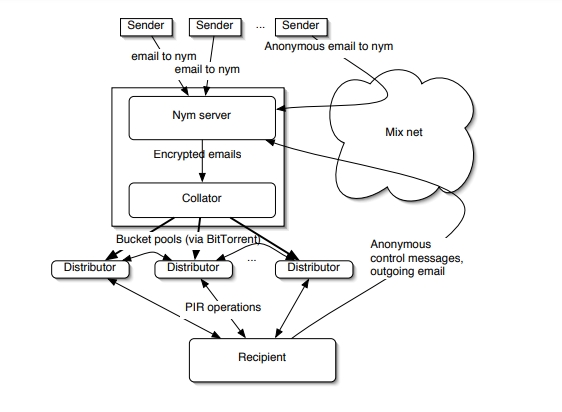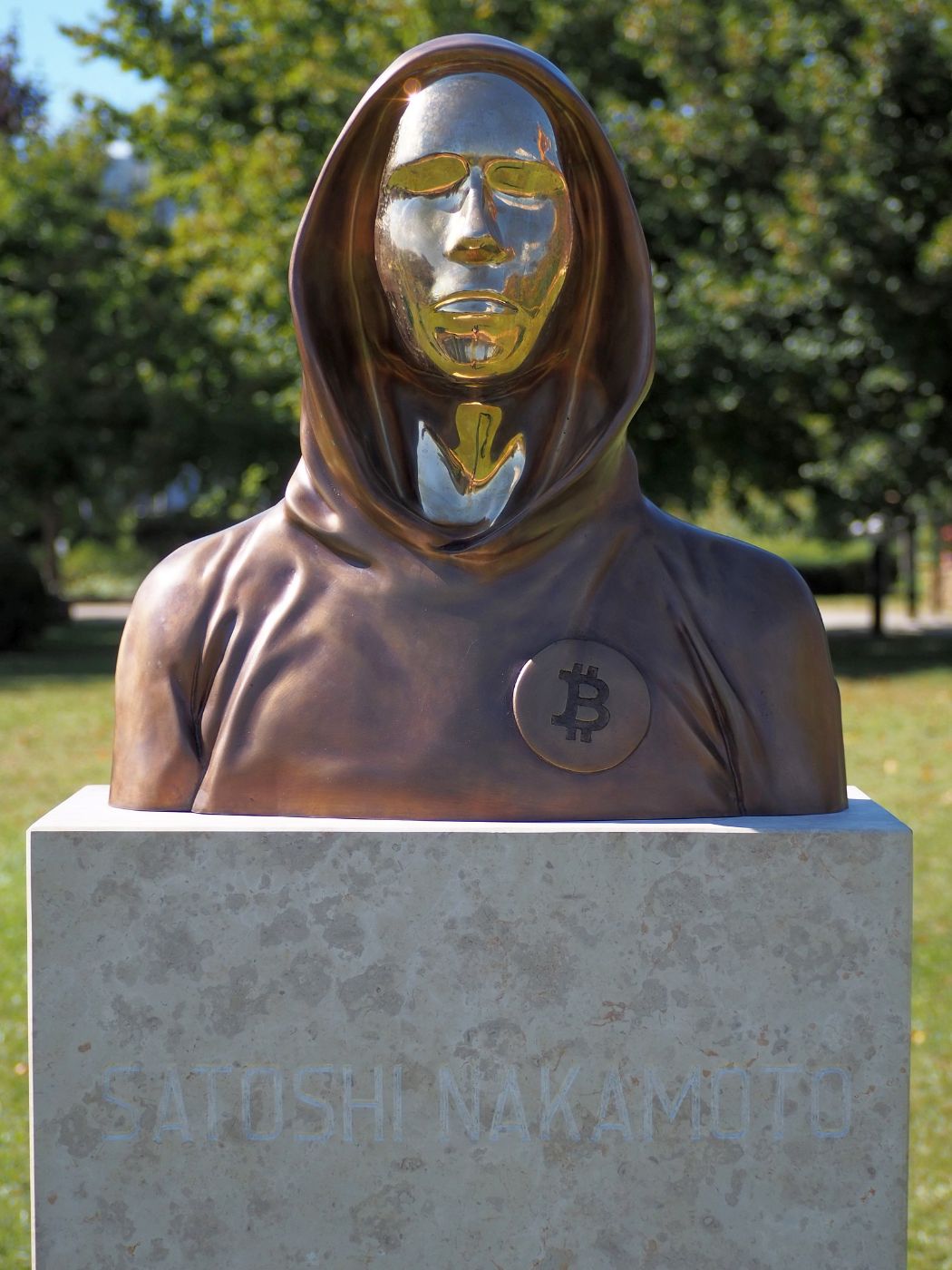and the distribution of digital products.
DM Television
Cypherpunks Write Code: Len Sassaman & Remailers
\ Long before Bitcoin, cypherpunks laid the groundwork for the creation of cryptocurrencies and other privacy-preserving tools. Sadly, not all of them are accompanying us today to see the evolution of their work, and Len Sassaman is on that list of the missing. He was an American computer scientist, renowned for his knowledge of cryptography, his privacy advocacy, and his cypherpunk ideals.
\ Leonard Harris Sassaman was born in 1980 in Pennsylvania (US), and he mostly taught himself everything he knew about digital systems since his youth. He didn’t get the chance to go to college, but when he was 18, he was volunteering in the Internet Engineering Task Force (IETF), responsible for the management of the rules (TCP/IP) that make the Internet itself work.
\ He was diagnosed with depression as a teenager and would suffer some functional neurological disorders for the rest of his life. Despite this, he continued his technologist path by moving to San Francisco in 1999. By this year, he was pretty invested in the cypherpunk community, and he was roommates and friends with Bram Cohen, the future creator of BitTorrent. They co-founded CodeCon in 2001 to focus on novel technologies.
\ The same year, Len hit the news for organizing protests against government surveillance and the imprisonment of Dmitry Sklyarov, a Russian programmer accused of allegedly violating US copyright law by creating software that bypassed eBook encryption protections. Next, he would be involved in various privacy-focused projects, including the GNU Privacy Guard and OpenPGP.
\ He indeed worked with Phil Zimmerman (PGP creator), and they developed the Zimmermann–Sassaman key-signing protocol to make the public key fingerprint verification process quicker. By the way, public key cryptography would become an essential part of cryptocurrencies years later, and Sassaman was an expert in it.
COSIC & RemailersAs we mentioned above, Len couldn’t attend college, but his knowledge and ability in cryptography landed him in the Computer Security and Industrial Cryptography (COSIC) research group of the Katholieke Universiteit Leuven in Belgium as a PhD student in 2004. His advisors there were the renowned cryptographers Bart Preneel and David Chaum, inventor of digital cash.
\ During his time at COSIC, Len Sassaman made significant strides in privacy and cryptography research, particularly in developing systems for anonymous communication. His primary project was the Pynchon Gate, an evolution of remailer technology that enabled pseudonymous information retrieval across a decentralized network. This system eliminated the need for a trusted third party, enhancing both security and privacy.
\

\ His work focused on creating a more secure and abuse-resistant environment for anonymous communications, which eventually influenced the architecture of decentralized digital currencies. He would stay at COSIC until his untimely death, accumulating over 45 publications and 20 conference committee positions.
In July 2011, his old ailments would lead him to take his own life. A tribute to him in ASCII art rests in block #138,725 on the Bitcoin blockchain.
Cypherpunk & Open-source IdealsSassaman championed the development and distribution of tools that empowered individuals to protect their privacy against intrusive surveillance and censorship. His dedication to open-source principles was not just about creating technology but ensuring that it remained accessible and adaptable for future generations. 
"This is our heritage, this research, these ideas that we have, that is leading to knowledge that no human in history has had the opportunity to have before, this is what we’re going to be handing down to future generations. We need to make sure we are not backed into a corner where we are not able to distribute this research to others, and that this isn’t locked up in IP lawyer vaults."
\ Sassaman’s ethos extended beyond technical contributions; he was also a vocal advocate against the encroachment of corporate and governmental control over technological advancements. He believed that restricting access to knowledge through patents or proprietary systems was a violation of fundamental freedoms. His work with groups like the Shmoo Group (a non-profit think-tank) showcased his commitment to community-driven projects and collaborative development, emphasizing transparency and collective progress over individual or corporate gain.
\ Besides, as Cohen mentioned, he was a very active cypherpunk on related mailing lists, and he was adept at publishing new open-source software anonymously. We’ll likely never know all the things that he developed for free, under a pseudonym, and that’s why he’s considered now a strong candidate for the identity of Satoshi Nakamoto.
Satoshi CandidateBesides his own cryptography expertise and strong cypherpunk ideals, Sassaman shared many of the characteristics and 'schedule' attributed to Bitcoin’s creator. His work was characterized by an integration of public key infrastructure, cryptography, and P2P network design, aligning with the technical foundation of Bitcoin.
\

Moreover, the timing of his tragic death and the almost simultaneous disappearance of Satoshi Nakamoto raises intriguing questions. Sassaman was deeply embedded in the community that influenced Bitcoin, and his pseudonymous contributions and extensive knowledge of privacy technology and decentralized systems suggest he could have been directly involved in or significantly influenced Bitcoin’s development.
\ The connections between Sassaman and other key figures in cryptocurrency, such as Hal Finney and Adam Back, further bolster this possibility. During the development of several privacy-enhancing tools, Sassaman collaborated with these individuals, who were also closely linked to the early days of Bitcoin.
\ Additionally, his use of British English and late-night activity patterns, akin to Satoshi’s, and his engagement in pioneering P2P projects like Cohen’s MojoNation provide further clues. Although direct evidence remains elusive, Sassaman’s profile fits well with the enigmatic figure of Satoshi Nakamoto. He left his personal laptop completely blocked, though, so we may never know it.\
Software for FreedomLen Sassaman believed that open knowledge and software were essential tools for human freedom. He once said, “The quest for knowledge is a fundamental part of being human. Any kind of prior restraint against that is in my opinion a violation of our freedom of thought and conscious.” His dedication to protecting technological progress from interference by corporations and governments reflected this belief. Len's vision was that technology should empower individuals and enable them to access information without barriers.
\ Obyte, a decentralized and censorship-resistant crypto platform, aligns with Sassaman’s ideals by removing the need for central authorities to control transactions. Unlike blockchain networks, Obyte operates on a Directed Acyclic Graph (DAG), allowing users to add transactions directly without intermediaries. This approach not only decentralizes power but ensures that no single entity or group can control or censor transactions, thus supporting freedom for everyone.
\
\ By embracing a decentralized structure, Obyte ensures that no one can tamper with or restrict access to the network. It empowers users to have autonomy over their transactions and data, advancing a system where freedom is preserved through technology. The network’s design encourages vigilance and constant improvement, ensuring that the power remains distributed among its users, just as Len advocated for a world where knowledge and software remain tools for liberation.
\ Read more from Cypherpunks Write Code series:
\
- Tim May & Crypto-anarchism
- Wei Dai & B-money
- Nick Szabo & Smart Contracts
- Adam Back & Hashcash
- Eric Hughes & Remailer
- St Jude & Community Memory
- Julian Assange & Wikileaks
- Hal Finney & RPOW
- John Gilmore & EFF
- Satoshi Nakamoto & Bitcoin
- Gregory Maxwell & Bitcoin Core
- Vinay Gupta & Mattereum
- David Chaum & Ecash
- Bram Cohen & BitTorrent
- David D. Friedman & Machinery of Freedom
- Tornado Cash Founders
- Peter Todd & Bitcoin Core
\
\ Featured Vector Image by Garry Killian / Freepik
Photograph of Len Sassaman by Darmouth / YouTube
\
- Home
- About Us
- Write For Us / Submit Content
- Advertising And Affiliates
- Feeds And Syndication
- Contact Us
- Login
- Privacy
All Rights Reserved. Copyright , Central Coast Communications, Inc.
